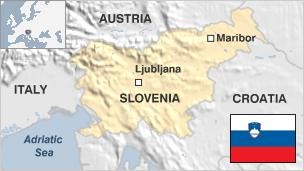Overview
Slovenia is a small beautiful country in Central Europe, covering an area of 20,273 km2, containing stunning Alpine mountains, thick forests and a short Adriatic coastline. The country has a mostly continental climate; but also has regions with sub-Mediterranean climate at the coast, and an Alpine climate in the region of the Southern Alps or Julian Alps in the northwest. Slovenia, who’s population totals roughly 2.084 million people; is bordered by Hungary to the northeast, Italy to the west, Austria to the north, Croatia to the southeast, and the Adriatic Sea to the southwest. Slovenia was the first former Yugoslav republic, to join the European Union, in 2004, and also became a member of Nato during the same year.
The predominant language is Slovenian, which is strongly related to the Southern Slavic language groups. Minority groups include: Hungarians, Croats and Serbs.

Piran
Socio-Economic Profile
Slovenia is considered a high-income advanced economy with a very high Human Development Index. Roughly 2/3 of the Slovenian workforce are employed in the services sector, while about 1/3 work within industry and construction sectors. Slovenia benefits from a well-educated workforce, well-developed infrastructure, and its location at the crossroads of major trade routes, between the Balkans, Central and Western Europe.
Slovenia has one of the highest Gross Domestic Product per capita in Central Europe at 22,083 EUR.

Zelenci countryside
Agricultural products include: potatoes, hops, wheat, coffee, corn, apples, pears; cattle, sheep and poultry.
Industries and Manufactured products include: Trucks, cars, electric power equipment, Ferrous metallurgy and aluminum products, lead and zinc smelting; electronics (including defense industry electronics), wood products, textiles, chemicals, and machine tools.
Slovenian Natural Resources include: ignite coal, lead, zinc, building stone, hydropower, and forests.
Contribution to GDP by economic sector is: Services 65.9 %, Industry 32.2%, and Agriculture at 1.8 %; while the Exports of goods and services account for 77 percent of GDP. The annual GDP growth rate of Slovenia’s averaged 2.72 % between 1996 and 2019.
Economics foresee an economic growth of 2.5 % during 2020 and 2.6 % for 2021.
Slovenia’s sovereign credit ratings are as follows: Standard & Poor’s credit rating is at AA+ with stable outlook. Moody’s credit rating is at Baa1 with positive outlook, and Fitch’s credit rating is presently at A.
Although Slovenia is a small country, it still provides an amazing variety of leisure, eco-adventure activities, in exceptional pristine natural surroundings from the Southern Alps to Adriatic Sea. Tourism and hospitality industry has been growing steadily for the last two decades, experiencing rapid growth, while contributing 12 % of GDP.
During 2018 Slovenia had almost 6 million tourist arrivals, which represented an increase of 8% in tourist visitors; which translated into a 10% increase in the number of overnight stays to 15.7 million. The revenue of accommodation and Food & Beverage service activities in Slovenia, is estimated to amount to around US$ 2.506,9 million by 2023.
Brief Socio-Economic Profile – 2019

Ljubljana by night
Population: 2.1 million
GDP (PPP): $71.1 billion
GDP Growth: 5%
GDP 5-yearcompound annual growth: 2.5%
GDP per capita: $34,407
Unemployment Rate: 6.6%
Inflation Rate (CPI): 1.4%
Foreign Direct Investment (FDI) Inflow: $702 million
Slovenia is ranked 29th among 44 countries in the Europe region


